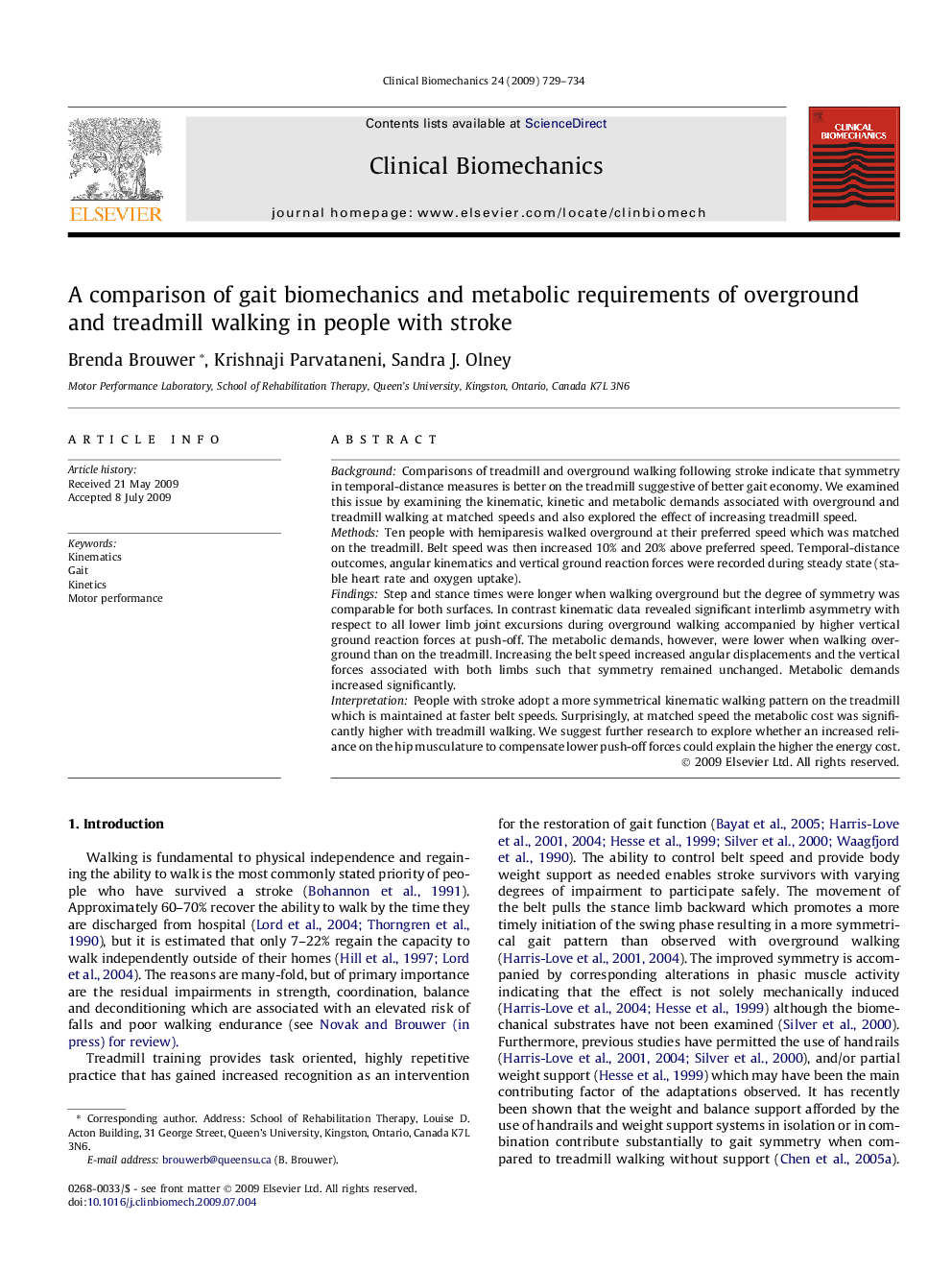| Article ID | Journal | Published Year | Pages | File Type |
|---|---|---|---|---|
| 4051280 | Clinical Biomechanics | 2009 | 6 Pages |
BackgroundComparisons of treadmill and overground walking following stroke indicate that symmetry in temporal-distance measures is better on the treadmill suggestive of better gait economy. We examined this issue by examining the kinematic, kinetic and metabolic demands associated with overground and treadmill walking at matched speeds and also explored the effect of increasing treadmill speed.MethodsTen people with hemiparesis walked overground at their preferred speed which was matched on the treadmill. Belt speed was then increased 10% and 20% above preferred speed. Temporal-distance outcomes, angular kinematics and vertical ground reaction forces were recorded during steady state (stable heart rate and oxygen uptake).FindingsStep and stance times were longer when walking overground but the degree of symmetry was comparable for both surfaces. In contrast kinematic data revealed significant interlimb asymmetry with respect to all lower limb joint excursions during overground walking accompanied by higher vertical ground reaction forces at push-off. The metabolic demands, however, were lower when walking overground than on the treadmill. Increasing the belt speed increased angular displacements and the vertical forces associated with both limbs such that symmetry remained unchanged. Metabolic demands increased significantly.InterpretationPeople with stroke adopt a more symmetrical kinematic walking pattern on the treadmill which is maintained at faster belt speeds. Surprisingly, at matched speed the metabolic cost was significantly higher with treadmill walking. We suggest further research to explore whether an increased reliance on the hip musculature to compensate lower push-off forces could explain the higher the energy cost.
